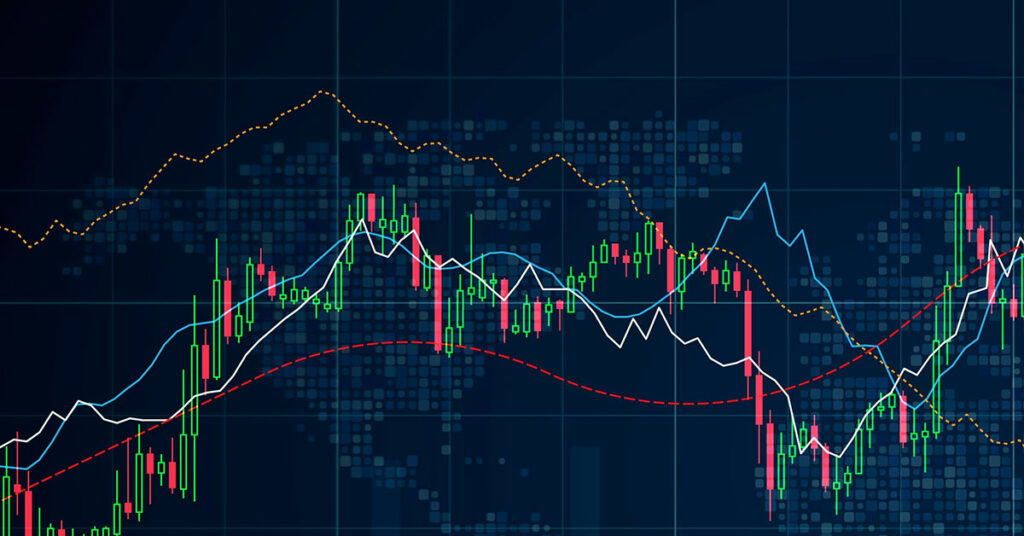What Is Investment Alpha?
Investing is an opportunity and being a successful investor are two different things. Although anyone can come up with a trading idea, those who want to make money need sound strategies grounded in statistics. Using investment alpha to inform your decisions is a common answer to the knowledge gap problem. Here is how to apply these concepts to hone your investment strategy.
Explaining Alpha
In the financial world, alpha, or α, is a type of performance ratio. It compares the active return generated by a given asset or investment to that of a predetermined market index.
Alpha is a useful tool for contextualizing performance. For instance, an investment alpha of 2 percent means that your asset did 2 percent better than the market index.
Alpha in the Real World
Why care about investment alpha? There are a few potential benefits to note. Unlike more complex performance indicators, alpha is a unitless, scalar quantity that may be easier to understand. Investment alpha is a signed value. It can be positive, indicating an investment that outperforms the market, or negative, indicating one that falls short of market performance. There are numerous formulas for calculating portfolio alpha, so you can choose a portfolio management strategy that makes the most sense to you.
Investment alpha helps people make sense of high-value investments. Since the calculation gives you the leeway to tweak the input data, you can take a short- or long-term view of different kinds of investments, like investing in an earlier stage company or redirecting some of your savings into an ETF.

Investment Strategy Basics: Alpha and Beta
Alpha calculations might also help you take a more active role in your portfolio’s performance. Alpha is commonly paired with another indicator called investment beta, or β. Whereas investment alpha represents your investment’s independent returns, investment beta measures the gains driven by the market. By splitting your finances into beta and alpha portfolios, you enhance your fine-grained control.
A Deeper Dive Into Alpha Investment
Of course, it takes a clear understanding of alpha in order to apply it to your investments. Familiarize yourself with the theory behind these calculations before plugging in your own numbers.
What Goes Into Calculating Investment Alpha?
One important concept to understand is the risk-free return rate. This rate is what a hypothetical investment would return over a given time frame if it carried no risk. Although there is no “risk-free” investment, the risk-free return rate is an excellent benchmark that can be tied to common stand-in values, such as the return rate of three-month U.S. Treasury bills.
The Typical Alpha Formula
How are alpha investment figures calculated? It is a basic, linear formula:
α = Rp – (Rf + β*(Rm – Rf))
Where
- α = The alpha you want to determine,
- β = The beta of the investment or portfolio compared to the selected index,
- Rp = The realized return of the portfolio or investment,
- Rf = The risk-free rate of return, and
- Rm = The return rate actually realized by the market or index.
Subtracting the market return from the risk-free interest rate reveals how well the market actually did. Multiplying the result times beta, or the volatility of the investment compared to the market volatility, contextualizes that performance. Re-adding the risk-free return rate brings us back to an accurate baseline so that we can subtract the amount from the investment’s return and produce a meaningful difference.
Alpha Volatility and Alpha Risk
In statistics, a null hypothesis refers to a supposition that proposes the absence of statistical significance. It is the claim that any seemingly significant result in a dataset is not driven by a correlation between the variables but rather caused by chance.
Alpha risk is the danger that such a hypothesis will erroneously be rejected. In other words, it is the chance that you might draw the incorrect conclusion that two variables are statistically related when they really are not.
The alpha risk problem is not too difficult to solve. The key is to choose a more expansive data-set. As with any statistical testing, increasing the sample size can make the results more representative of reality. Calculating the coefficient of determination, or R-squared, to understand how much your dependent variable’s variance is accounted for by the independent variable, might also make the data clearer.
Weighted Alpha
Investment alpha determinations take snapshots of specific moments in time, such as a fund’s current performance. Weighted calculations expand this practice over a broader window.
For example, your portfolio contains multiple investments with their own alphas. You might determine the total weighted investment alpha of the entire portfolio over the course of a year by calculating:
αw = (Σ(α*w)) / 365
Where
- αw = Total weighted alpha,
- Σ(α*w) = The sum of all the individual alphas and weights, and
- 365 = The number of days per year.
The results of this calculation can vary depending on how you assign weights and other factors. It is commonly used to determine whether investments that experience many swings are generally headed upward or downward. You might also make it a key aspect of your automated investment strategies.
Jensen’s Alpha
Jensen’s alpha uses a formula that looks almost identical to the standard alpha, but it has one fundamental difference. Instead of comparing your returns to some market index, it determines how they size up against a theoretical expected return.
Where do the theoretical values in the Jensen’s alpha formula come from? Most financiers derive them using an ideal market model, such as the capital asset pricing model, or CAPM. Such models help elucidate the ties between expected asset returns and systematic risks, or the market risks intrinsic to an entire sector.

The Challenges of Using Alpha
Alpha is just one of a few common risk ratios. Although plenty of investors like it for its straightforward simplicity, it is not immune to human errors.
Imagine that you want to determine the investment alpha for a stock-only portfolio. If you use a market index that also includes bonds and other types of investments, then your calculations might not accurately reflect your portfolio assets’ potential. Portfolio management tools that give you access to a more accurate portfolio view might help you avoid missteps by keeping you in tune with the types of assets your investment strategy should focus on.
Alpha vs. Beta
Alpha puts your investment’s performance in terms of a benchmark. Beta, on the other hand, relates your investment’s volatility to that of a standard reference, such as the stock market.
These basic distinctions mean that even though both alpha and beta are dimensionless numbers, they describe completely distinct behaviors. For instance, an alpha value of one would signify that the measured investment did 1 percent better than the market. A beta value of one would mean that if the market rose by 1 percent, the investment’s worth would also rise by 1 percent.
Why use beta?
Beta is used for more than just calculating alpha. As a general quantity, it can reveal a more useful portrayal of expected portfolio or investment performance. Whereas alpha offers a look back at whether your investments did as well as they should have, portfolio beta lets you anticipate how your holdings might respond to swings.

Applying Alpha Investment to Your Portfolio
We mentioned the notion of splitting a portfolio into its alpha- and beta-generating components, but how do you know where to draw the line? Let us explore some of the concepts you will need to be familiar with to leverage this technique.
Portfolio Returns
When calculating your portfolio returns, you cannot always get accurate results by merely adding up the profits. In many cases, you will be making assumptions based on your expected returns, or the anticipated profits or losses based on what you know about the individual investments in the portfolio.
Market Risk Types
Systematic risks, also known as market risks, are tied to broad-impact events, such as economic downswings or recessions. Idiosyncratic risks are associated with specific assets.
Both market risk types play roles in portfolio valuation. For instance, a stock might jump due to a company’s performance or because general investment trends make buyers feel more confident.

Portfolio Techniques
What can you do with investment alpha and beta information? These quantities can inform a variety of the following investment strategies.
Active Management
Hedging techniques are designed to offset losses or gains. For instance, you might take a short position on a security that is likely to drop in value by borrowing shares at a high price, selling them and then returning the same number of shares to the lender at a lower price. This would let you generate a market return from the security’s loss of value.
What if the security’s value was expected to rise? You could hedge a long position by buying an options contract or purchasing shares without an immediate plan for selling them.
Passive Portfolio Management
In passive management, you typically just try to mirror some market index. Instead of using alpha and beta to beat the odds, you are working to maintain a sustainable average return on investment over the long term.
The Hybrid Strategy
Most active strategies focus on alpha investment, while passive techniques typically rely on beta, but it is not all black and white. You can pursue passive and active returns by maintaining multiple portfolios or using investment dashboards that enhance your ability to tweak the controls. Some strategies also try to capitalize on market volatility.

Other Investment Performance Considerations
Today, there are many ways to measure performance. Stock market volatility and other factors aside, no methodology is perfect. What is more, some people simply are not fans of tackling the kind of rigorous linear regression involved in certain calculations.
When choosing an alpha- or beta-driven portfolio management strategy, remember that not all mathematical models are equivalent. For instance, the validity of the alpha concept conflicts with something called the efficient market hypothesis. This idea proposes that the prices of assets accurately reflect all possible market data. If this were true, then adding risk would be the only way to increase your returns since alpha would not have an impact.
As you invest, you will probably also run into the Chicago Board Options Exchange’s Volatility Index, or VIX. This index describes investors’ expectations that market volatility will occur in the next 30 days. Since fear and stress also influence investors’ responses to stock market volatility, VIX can offer clues that put investment alpha into clearer context.
Managing Systematic and Idiosyncratic Risks for Better Investment Returns
Making the most of alpha, beta and other risk ratios demands enhanced knowledge. You cannot simply pick an index fund at random and make it the basis for your calculations. Instead, you need to understand how and when to apply each formula appropriately. The M1 Finance platform constantly supplies its investors with online tools and articles to stay informed.
M1 lets you invest without paying commissions or management fees, so you get the information you need without facing stumbling blocks. With this platform, it’s as easy to customize your portfolio’s contents in response to stock market volatility as it is to personalize the intuitive smartphone app’s dashboard. In other words, nothing stands between you and the feedback that powers proactive decision-making.
M1 Finance is accessible, free and easy to use. Anyone can invest intelligently using the same principles that experts depend on to succeed.
